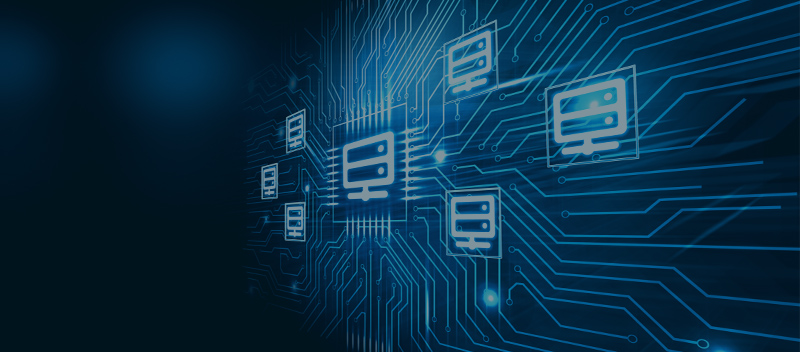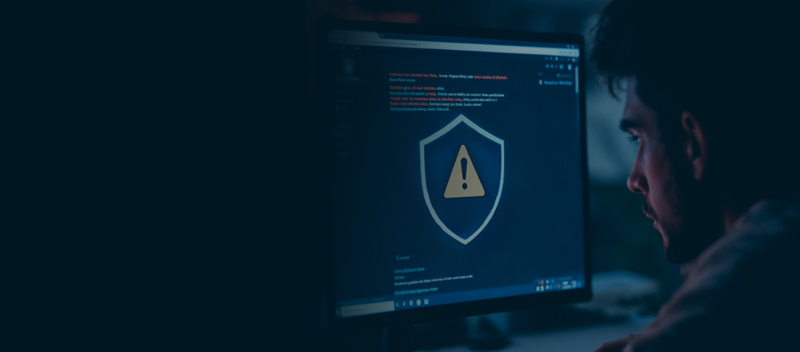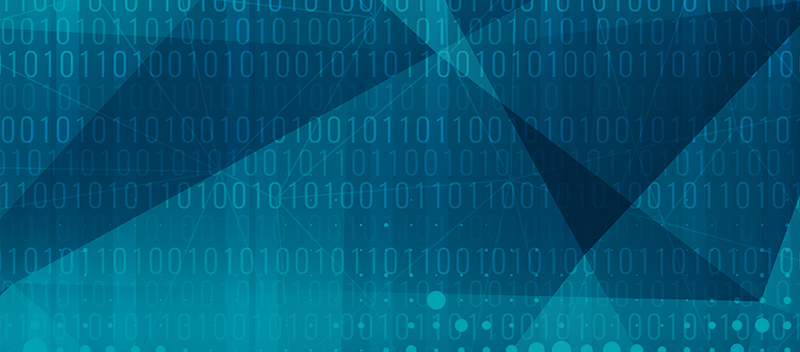Integrating SOC 2 with Global Compliance Standards

Ensuring compliance with multiple frameworks can feel like navigating a labyrinth. If you're a part of an organization that's already SOC 2 compliant or considering adding more certifications like HIPAA, PCI DSS, or GDPR to your repertoire, you're not alone.
For businesses like yours, understanding how SOC 2 can be seamlessly integrated with other compliance frameworks is essential. Not only does it streamline processes, but it also enhances your overall security posture.
We're here to guide you through the complexities of this integration, offering practical strategies and insights to help you achieve a unified approach to data security. At TrustNet, we pride ourselves on being your trusted advisors in this journey, ready to support you every step of the way.
Understanding SOC 2 and Other Frameworks
SOC 2 Compliance is meeting the standards the American Institute of Certified Public Accountants (AICPA) sets for managing customer data. This management is evaluated based on five Trust Services Criteria.
SOC 2 Compliance is built around the five "trust service principles," namely security, availability, processing integrity, confidentiality, and privacy.
Security. Information and systems are protected against unauthorized access, unauthorized disclosure of information, and damage to systems that could compromise the availability, integrity, confidentiality, and privacy of information or systems and affect the entity’s ability to achieve its objectives.
Security refers to the protection of
i. information during its collection or creation, use, processing, transmission, and storage, and
ii. systems that use electronic information to process, transmit or transfer, and store information to enable the entity to meet its objectives. Controls over security prevent or detect the breakdown and circumvention of segregation of duties, system failure, incorrect processing, theft or other unauthorized removal of information or system resources, misuse of software, and improper access to or use of, alteration, destruction, or disclosure of information.
Availability. Information and systems are available for operation and use to meet the entity’s objectives.
Processing Integrity. System processing is complete, valid, accurate, timely, and authorized to meet the entity’s objectives.
Confidentiality. Information designated as confidential is protected to meet the entity’s objectives. Confidentiality addresses the entity’s ability to protect information designated as confidential from its collection or creation through its final disposition and removal from the entity’s control in accordance with management’s objectives.
Privacy. Personal information is collected, used, retained, disclosed, and disposed of to meet the entity’s objectives.
SOC 2 is essential for ensuring the security and reliability of data. In an increasingly digital environment, it helps organizations set up and uphold strong standards for data protection, fostering trust with stakeholders and consumers.
Common Compliance Frameworks
Organizations frequently encounter several other significant frameworks, each with unique requirements:
-
- HIPAA (Health Insurance Portability and Accountability Act): Primarily affects healthcare organizations, including providers, insurers, and their business associates' by setting the standard for protecting sensitive patient information. Compliance involves implementing security measures, conducting regular risk assessments, and ensuring patient data is handled with confidentiality and integrity.
- GDPR (General Data Protection Regulation): Applies to any organization processing personal data of EU citizens. It requires stringent data protection measures, transparency in data handling, and provides individuals with rights over their personal information. The challenge lies in consistently applying these rules across multiple jurisdictions.
- PCI DSS (Payment Card Industry Data Security Standard): Focuses on securing credit card transactions and applies to any organization that handles cardholder data. Organizations must adopt secure data storage, encryption, and regularly monitor and test networks to prevent fraud and data theft.
Overlaps and Synergies
Understanding how SOC 2 aligns with these frameworks can streamline your compliance efforts and bolster your security posture:
-
- Privacy Alignment: Both SOC 2 and GDPR emphasize the importance of privacy. By aligning these frameworks, you can ensure that privacy policies are robust and compliant across different regions.
- Data Security and Confidentiality: SOC 2’s confidentiality principle is in harmony with HIPAA’s requirements. Leveraging this overlap ensures that sensitive health information is doubly protected under both standards.
- Security Measures: PCI DSS and SOC 2 have stringent security requirements, which can be coalesced to create a unified approach to securing payment and other sensitive data.
By recognizing and utilizing these overlaps, you can reduce redundancy, optimize your compliance processes, and enhance your overall data protection strategy.
For more on our SOC 2 compliance services
Challenges of Integrating Multiple Frameworks
Managing compliance with multiple frameworks is no small feat. The complexities involved demand careful navigation and strategic planning. Let’s explore some of the common challenges you might face and why a unified approach is vital.
Complexities of Compliance Management
Each framework has its own set of requirements, documentation, and audit processes. This complexity can lead to:
-
- Resource Strain: Allocating sufficient resources to meet the demands of each framework can stretch your team's capabilities.
- Cost Implications: The financial burden of maintaining compliance across multiple standards can be significant, impacting your bottom line.
- Time Consumption: Compliance efforts often require a substantial time investment, taking focus away from core business operations.
Potential Conflicts and Redundancies
When dealing with multiple frameworks, conflicts and redundancies can arise, complicating your compliance efforts:
-
- Conflicting Requirements: Some frameworks may have contradictory requirements, making it challenging to develop a cohesive compliance strategy.
- Duplicate Efforts: Without proper alignment, you might find yourself duplicating tasks, such as conducting similar risk assessments or implementing redundant security controls.
- Data Management Issues: Handling data according to different standards can lead to inconsistencies and errors in data processing and storage.
Importance of a Unified Approach
A unified approach to data security is not just beneficial; it's essential. By integrating frameworks, you can:
- Streamline Processes: Aligning frameworks can reduce redundancy, saving time and resources.
- Enhance Security Posture: A cohesive strategy ensures that all aspects of data security are addressed comprehensively, reducing vulnerabilities.
- Simplify Audits: A unified approach makes it easier to demonstrate compliance during audits, as documentation and processes are streamlined.
By adopting a unified strategy, you can navigate the challenges with confidence and ensure that your organization remains secure and compliant.
Benefits of Integrating SOC 2
Integrating SOC 2 into your compliance strategy offers numerous advantages that simplify your processes and bolster your security framework. Let's explore how this integration can benefit your organization.
— Streamlined Compliance Efforts
By weaving SOC 2 into your existing compliance landscape, you can significantly streamline your efforts:
-
- Unified Frameworks: Aligning SOC 2 with other compliance standards minimizes overlap, allowing you to address multiple requirements with cohesive policies and procedures.
- Simplified Documentation: With a consolidated approach, maintaining and updating compliance documentation becomes more manageable, saving time and reducing errors.
- Consistent Audits: A unified compliance strategy ensures that audit processes are less cumbersome, as your organization can present a single, comprehensive set of controls and practices.
— Potential Cost Savings and Improved Efficiency
Integrating SOC 2 not only saves time but also reduces costs:
-
- Resource Optimization: By eliminating redundant processes, you free up resources and staff to focus on strategic initiatives rather than repetitive compliance tasks.
- Reduced Audit Costs: With streamlined documentation and processes, audit preparations become less time-consuming and costly.
- Efficiency Gains: Improved coordination across compliance efforts leads to faster implementation and execution of security measures, enhancing your operational efficiency.
— Enhanced Security Posture
A holistic approach to integrating SOC 2 strengthens your overall security posture:
-
- Comprehensive Coverage: SOC 2’s broad principles ensure that all critical aspects of data security are covered, providing more comprehensive protection against threats.
- Proactive Risk Management: Regular assessments and updates inherent in SOC 2 integration keep your security measures current and effective against emerging risks.
- Increased Trust: Demonstrating a strong commitment to data security enhances your reputation with clients and stakeholders, building trust and confidence in your organization.
By adopting SOC 2 as part of a broader compliance strategy, you position your organization to operate more effectively and securely.
Strategies for Integration
Here are some practical strategies to help you align these standards effectively.
Practical Tips for Integration
-
- Conduct a Gap Analysis: Start by identifying where SOC 2 requirements overlap with your existing compliance frameworks. This analysis helps pinpoint areas that need adjustment or reinforcement.
- Prioritize Common Controls: Focus on controls that satisfy multiple frameworks at once. This not only streamlines processes but also reduces the workload on your compliance team.
- Leverage Technology Solutions: Use compliance management software to automate and track compliance activities across different standards. This ensures consistency and real-time updates.
Best Practices for Aligning Policies and Procedures
-
- Develop a Unified Compliance Framework: Create a single set of policies and procedures that address the requirements of multiple standards. This unified approach minimizes confusion and ensures consistency.
- Regular Training and Awareness: Ensure your team understands the integrated compliance strategy. Regular training sessions keep everyone informed about new requirements or updates.
- Document Everything: Meticulously document your compliance strategy, policies, and procedures. Clear documentation aids in audits and provides a reference for your team.
Leveraging Existing Controls and Assessments
-
- Utilize Existing Controls: Identify and adapt existing controls to meet the requirements of SOC 2 and other frameworks. This reduces duplication of effort and makes the most of your current resources.
- Continuous Monitoring and Assessment: Regularly assess the effectiveness of your controls and make necessary adjustments. Continuous monitoring helps you manage risks and compliance proactively.
- Engage External Experts: Sometimes, an external perspective can be invaluable. Consider consulting with experts who specialize in integrating compliance frameworks to ensure a seamless transition.
These strategies can help you effectively integrate SOC 2 with other frameworks, enhancing your organization’s compliance posture.
SOC 2 Integration Case Study
Amid rising cyber threats, Calendly, a leader in CRM and meeting scheduling, recognized the pressing need to enhance its cybersecurity measures. Trusted by millions globally, protecting their customers' sensitive data was paramount.
TrustNet's Involvement
To address these challenges, Calendly partnered with TrustNet to elevate its security infrastructure. Our team implemented a comprehensive suite of protocols:
-
- NIST Risk Assessment: This process helped identify and prioritize potential cybersecurity threats, laying the foundation for a robust defense strategy.
- HIPAA Compliance: By adhering to health information privacy standards, Calendly ensured that any sensitive health-related data was well protected.
- SOC 2 Framework: By establishing stringent criteria for managing customer data, Calendly upheld the trust service principles essential for its business.
- ISO 27001: This provided a comprehensive security management system, allowing for continuous assessment and enhancement of their cybersecurity posture.
Overcoming Challenges and Reaping Benefits
Navigating the complexities of these integrations wasn't without challenges. However, the benefits far outweighed the hurdles:
-
- Enhanced Customer Trust: Customers gained confidence knowing their data was secured with cutting-edge measures.
- Regulatory Compliance: Meeting industry standards not only ensured safety but also attracted new business opportunities.
- Reputation Enhancement: With fortified cybersecurity, Calendly solidified its reputation as a dependable platform in the eyes of users and partners alike.
Calendly's journey is a testament to how integrating the right cybersecurity frameworks can not only protect a business but also propel it toward growth and success.
Bringing It All Together: The Power of SOC 2 Integration
Integrating SOC 2 with other compliance frameworks isn't just advantageous — it's essential. This strategic alignment not only streamlines operations and reduces costs but also fortifies your organization's security posture, enhancing trust and compliance across the board.
A holistic approach to data security ensures comprehensive protection and resilience against emerging threats. As experts in this field, TrustNet is here to guide you through this journey, providing the insight and expertise needed for seamless integration.
Ready to elevate your compliance game? We invite you to take advantage of our free consultation or assessment to evaluate your compliance needs. Download our insightful whitepaper for more in-depth knowledge on the topic.
and secure your organization's future. Talk to an Expert now.




